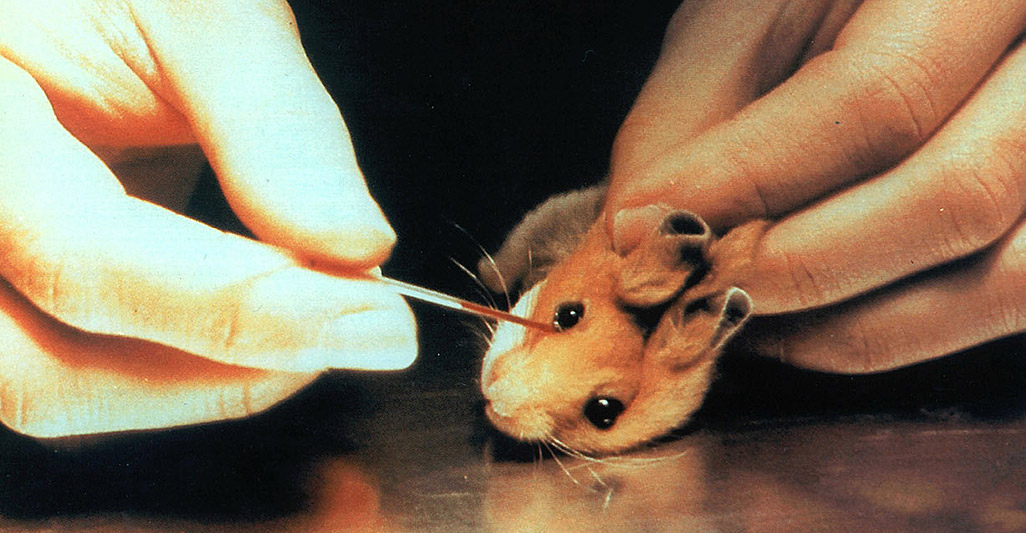Animal testing regarding cosmetics (including shampoos, soaps, shower gel and so on) and cleaning powders in general is pretty complicated. These products are made of many different chemicals mixed together to obtain the finished product. The company that makes the substances and the one that studies, tests, products and puts it into the market are often different ones.
Regardless of their future utilisation, all the new chemical substances are tested with generic tests on animals, like the LD50 (see glossary), and are then tested again with more specific tests, like the Draize (see glossary) for cosmetics, according to their future applications.
The vast majority of the finished products is not tested on animals because it’s not necessary by law and companies usually don’t want to waste money for tests that they know to be of no scientific value.
Some big multinationals are an exception, (e.g. Procter & Gamble), and they test also the finished products claiming to guarantee more safety for their consumers. The truth is that they perform tests just to have more data on the toxicity of their goods, in case of trials with their customers.
1976 is an important date for animal testing, this is the year when the Positive List has been written. It is an inventory of all the substances considered safe until then. From 1976 on, all the substances not belonging to the list had to be tested on animals by law, in order to provide a toxicological profile to the authorities, which encompassed tests like LD50, Draize Skin test, Draize Eye test and many more like phototoxicity, carcinogenicity and so on. Some of these are specific for cosmetics, like the Draize test. Some others are more general and used for all the chemicals regardless of their application. All these tests involve terrible sufferings for the animals, but the chemical and cosmetics companies never moved a finger to modify these pointless norms, at least until the public opinion started to realise what was happening in the labs.
Some companies decided not to participate to this animal slaughter and choose not to increase the number of animals sacrificed for the sake of economic interests. These companies decided to use only the substances of the Positive List, not to perform any tests on animals and not to have them done by third parties.
Deodorant
Almay, Avon, Lady Mitchum, Mitchum, Tom’s of Maine
Fragrance
Aramis, Avon, Bath & Body Works, Beautiful, Chanel, Charlie, Crabtree & Evelyn, Garden Botanika, Liz Claiborne, Tommy, Tommy Girl, Victoria’s Secret, White Linen
Hair Care
Aveda, Bath & Body Works, Body Shop, Citré Shine, Flex, Jheri Redding, John Paul Mitchell Systems, Revlon, Sebastian, Wella
Hygiene
Natracare, Seventh Generation
Laundry and Cleaning
Bon Ami, Ecover, Seventh Generation, Sun
Oral Care
Tom’s of Maine, Nature’s Gate
Paper Products
Marcal, Seventh Generation
Skin Care
Almay, Aubrey Organics, Avon, Basis, Bobbi Brown, Body Shop, Clinique, Estée Lauder, Jane, M.A.C., Origins, Revlon, Ultima II
Soap
Basis, Bath & Body Works, Body Shop, Garden Botanika, San Francisco Soap Company
Laundry and cleaning
The case is the same as with the cosmetics: there’s no need to test the finished product but just the toxicity of the single ingredients. Specific experiments like the Draize test are not generally done, but LD50 or carcinogenicity tests are widely used.
We can’t ignore the environmental impact of the cleaning powders, whose phosphates, cationic tensioactives and chlorine bleaches pollute the sea and soils.
It’s worth to highlight that the law that will abolish animal tests for cosmetics won’t necessary abolish tests for the generic toxicity (e.g.LD50).




